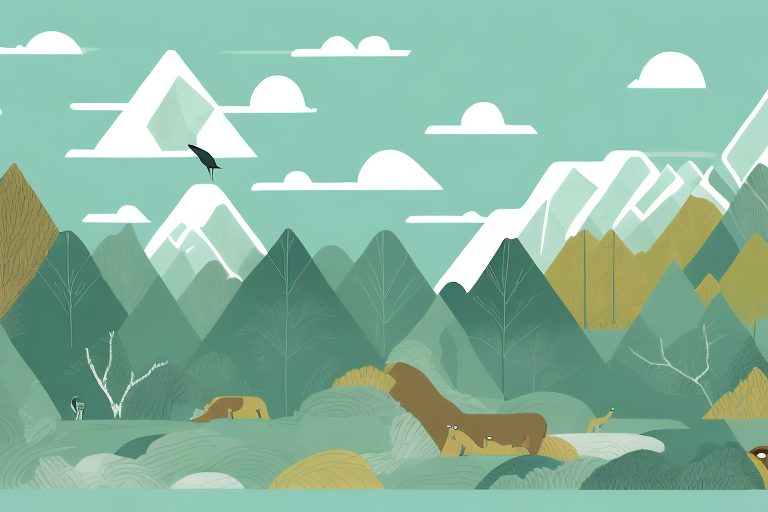Capturing breathtaking landscapes and stunning wildlife shots requires a camera that can meet the unique challenges of these genres. With numerous options available in the market, choosing the best camera for landscape and wildlife photography can be a daunting task. In this comprehensive guide, we will explore the factors to consider when selecting a camera, the importance of the right camera for this type of photography, and the different types of cameras suitable for capturing stunning landscapes and wildlife. We will also delve into the top features to look for, such as megapixels, sensor size, ISO capabilities, autofocus capabilities, weather sealing, image stabilization, burst mode, low light performance, and post-processing capabilities. Moreover, we will discuss the benefits of full-frame cameras, the difference between mirrorless and DSLR cameras, various lens options, and the importance of ergonomics, portability, and battery life. Finally, we will even touch on budget-friendly options that can deliver exceptional results.
Factors to Consider when Choosing a Camera for Landscape and Wildlife Photography
When embarking on the quest to find the best camera for landscape and wildlife photography, several factors require careful consideration.
The first factor to contemplate is the camera’s resolution or megapixels. Higher megapixel counts allow for greater detail and the ability to enlarge images without losing quality, making them ideal for landscape photography. Wildlife photography, on the other hand, can benefit from both high-resolution images for capturing intricate details and lower resolution for maximizing buffer capacity when shooting bursts.
The sensor size is another crucial factor. Full-frame sensors offer larger pixels and superior low-light performance, while APS-C and Micro Four Thirds sensors provide a more extensive field of view with smaller and lighter camera bodies.
Another important factor to consider when choosing a camera for landscape and wildlife photography is the lens selection. Different lenses have varying focal lengths and aperture sizes, which can greatly impact the types of shots you can capture. For landscape photography, a wide-angle lens is often preferred to capture expansive scenes and emphasize depth. On the other hand, wildlife photography often requires a telephoto lens with a longer focal length to bring distant subjects closer and capture fine details.
Understanding the Importance of the Right Camera for Landscape and Wildlife Photography
Choosing the right camera for landscape and wildlife photography is essential for achieving outstanding results. These genres demand specific features and capabilities that enable photographers to capture the beauty of nature in all its glory.
One significant reason why the right camera matters is its ability to handle challenging lighting conditions. Landscape photography often involves shooting during the golden hours, where the sun’s position creates breathtaking light and shadows. Similarly, wildlife photography often requires shooting in low-light conditions or situations with rapid changes in lighting, such as capturing birds in flight.
Furthermore, the right camera should offer advanced autofocus capabilities for capturing fast-moving wildlife, as well as weather sealing to protect against dust, moisture, and extreme temperatures during outdoor shoots. The camera’s ergonomics and portability are also crucial for long hikes and constant movement in the wilderness. Additionally, a camera with excellent battery life ensures that photographers do not miss out on any opportunities due to a drained battery.
Moreover, the right camera for landscape and wildlife photography should have a high-resolution sensor to capture intricate details and produce sharp, high-quality images. This is especially important when photographing landscapes with intricate textures, such as rugged mountains or delicate flowers, or when capturing wildlife with fine fur or feathers.
Exploring the Different Types of Cameras Suitable for Landscape and Wildlife Photography
When it comes to cameras for landscape and wildlife photography, there is no one-size-fits-all solution. Different camera types offer distinct advantages and disadvantages that cater to the unique requirements of these genres.
DSLR (Digital Single-Lens Reflex) cameras are a popular choice among landscape and wildlife photographers due to their excellent image quality, versatile lens options, and robust build quality. They provide optical viewfinders, precise autofocus systems, and have a wide range of accessories available.
Mirrorless cameras, on the other hand, offer a more compact and lightweight alternative. With their electronic viewfinders, silent shooting capabilities, and cutting-edge autofocus systems, they are well-suited for both landscapes and wildlife.
Another category to consider is medium format cameras, which offer exceptionally high-resolution sensors and superior image quality. While they may lack the low-light performance and burst shooting speed of their smaller sensor counterparts, they excel in rendering details and delivering stunning image clarity.
For landscape photography, it is important to consider the dynamic range of the camera. Cameras with a higher dynamic range can capture a wider range of tones, allowing for more detail in both highlights and shadows. This is especially crucial when photographing landscapes with high contrast, such as sunsets or mountain ranges.
When it comes to wildlife photography, the speed and accuracy of the autofocus system are key factors to consider. Animals can be fast-moving and unpredictable, so a camera with a fast and reliable autofocus system can greatly increase the chances of capturing sharp and well-focused images. Look for cameras with advanced autofocus tracking capabilities and a high number of autofocus points.









